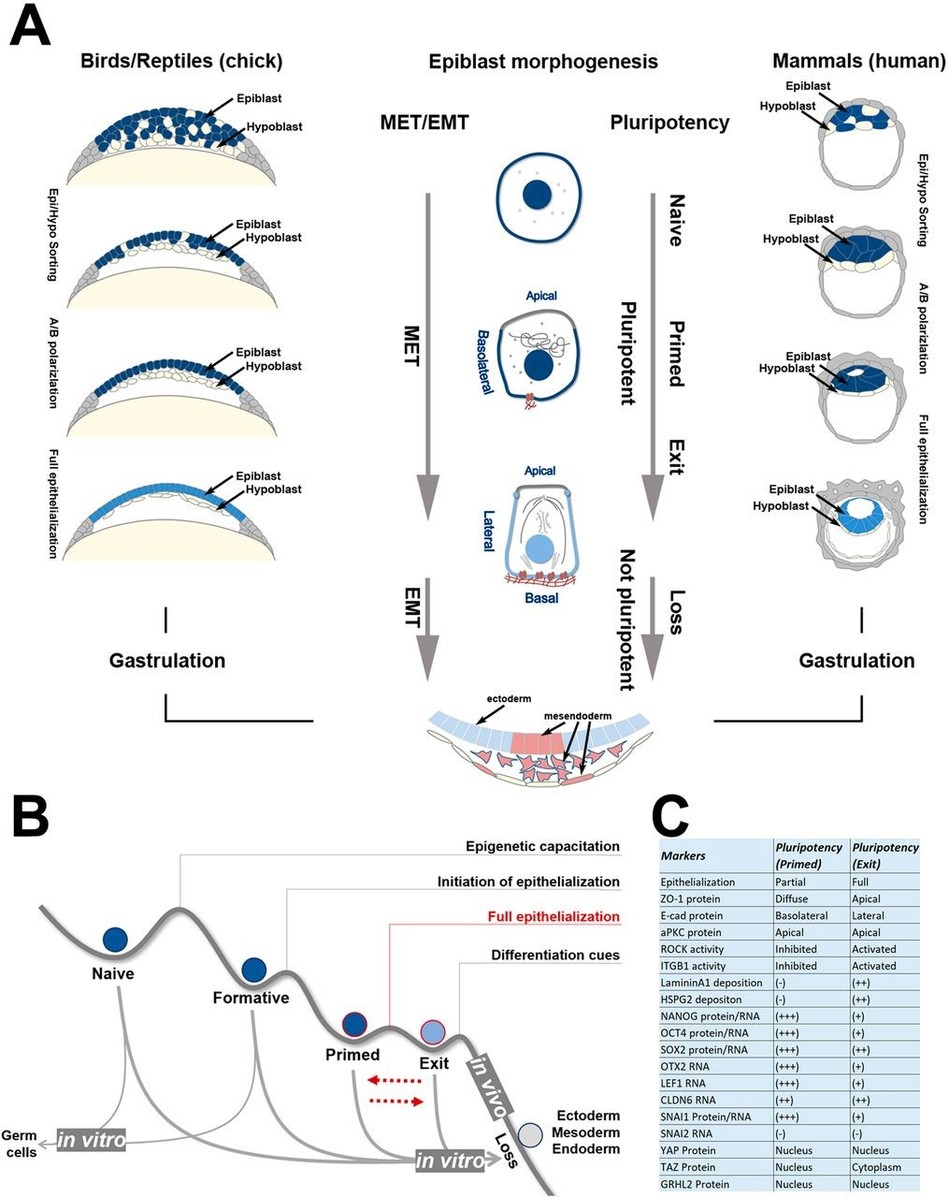- HOME
- News & Events
- Publications
- 【Publications】Mesenchymal-epithelial transition regulates initiation of pluripotency exit before gas...
Publications
【Publications】Mesenchymal-epithelial transition regulates initiation of pluripotency exit before gastrulation
February 15 2020
Sofiane Hamidi, Hiroki Nagai, Guojun Sheng
Paper Information
Sofiane Hamidi, Yukiko Nakaya, Hiroki Nagai, Cantas Alev, Takeya Kasukawa, Sapna Chhabra, Ruda Lee, Hitoshi Niwa, Aryeh Warmflash, Tatsuo Shibata, Guojun Sheng
Development 2020 doi: 10.1242/dev.184960 3 February 2020
https://dev.biologists.org/content/147/3/dev184960
Highlights
- PSCs undergo a mesenchymal-epithelial transition (MET) prior to EMT-associated pluripotency loss
- This partial MET, is associated with reversible initiation of pluripotency exit
- Pluripotency is restricted to an intermediate cellular state between the fully mesenchymal and fully epithelial states
Abstract
The pluripotent epiblast gives rise to all tissues and organs in the adult body. Its differentiation starts at gastrulation, when the epiblast generates mesoderm and endoderm germ layers through epithelial-mesenchymal transition (EMT). Although gastrulation EMT coincides with loss of epiblast pluripotency, pluripotent cells in development and in vitro can adopt either mesenchymal or epithelial morphology. The relationship between epiblast cellular morphology and its pluripotency is not well understood. Here, using chicken epiblast and mammalian pluripotency stem cell (PSC) models, we show that PSCs undergo a mesenchymal-epithelial transition (MET) prior to EMT-associated pluripotency loss. Epiblast MET and its subsequent EMT are two distinct processes. The former, a partial MET, is associated with reversible initiation of pluripotency exit, whereas the latter, a full EMT, is associated with complete and irreversible pluripotency loss. We provide evidence that integrin-mediated cell-matrix interaction is a key player in pluripotency exit regulation. We propose that epiblast partial MET is an evolutionarily conserved process among all amniotic vertebrates and that epiblast pluripotency is restricted to an intermediate cellular state residing between the fully mesenchymal and fully epithelial states.

